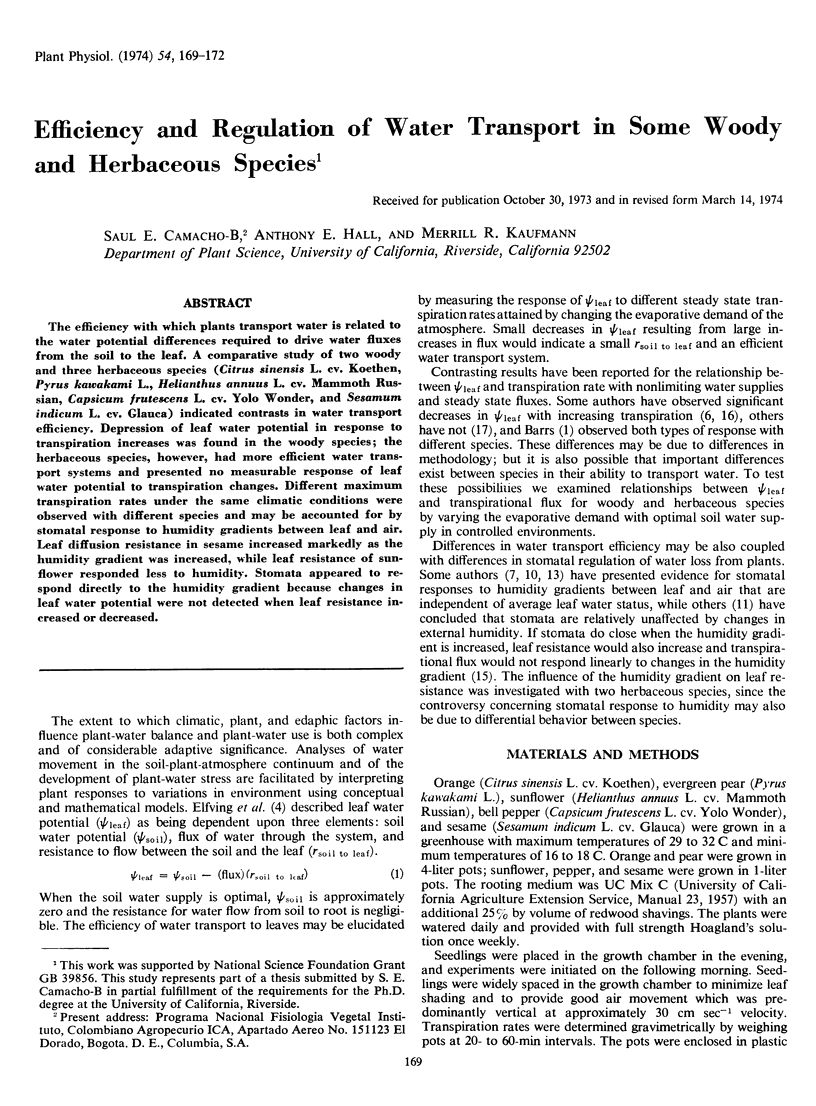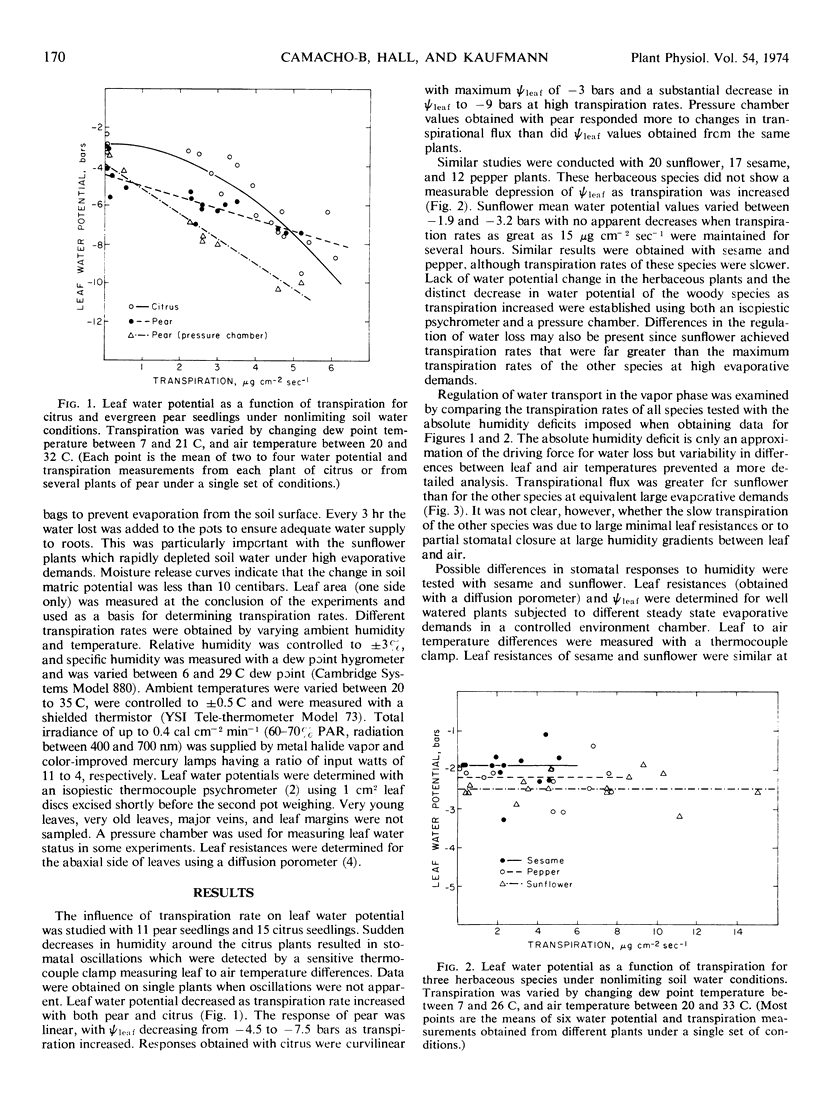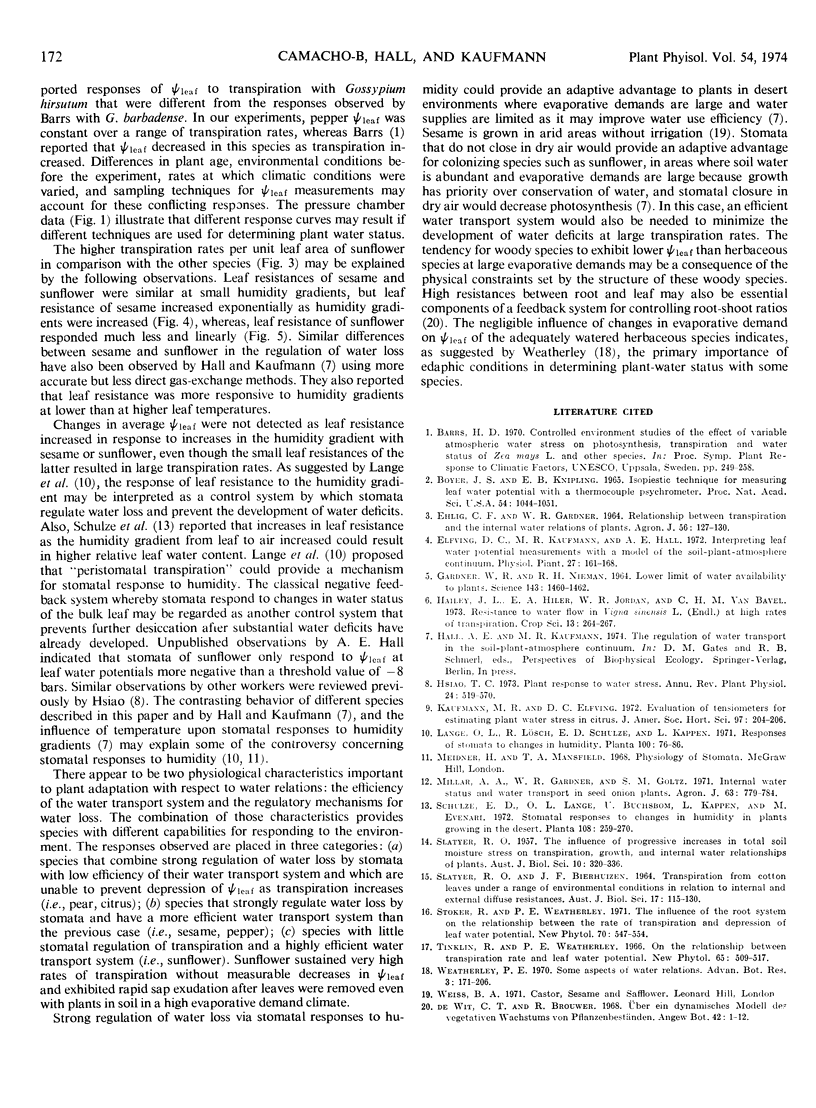Abstract
The efficiency with which plants transport water is related to the water potential differences required to drive water fluxes from the soil to the leaf. A comparative study of two woody and three herbaceous species (Citrus sinensis L. cv. Koethen, Pyrus kawakami L., Helianthus annuus L. cv. Mammoth Russian, Capsicum frutescens L. cv. Yolo Wonder, and Sesamum indicum L. cv. Glauca) indicated contrasts in water transport efficiency. Depression of leaf water potential in response to transpiration increases was found in the woody species; the herbaceous species, however, had more efficient water transport systems and presented no measurable response of leaf water potential to transpiration changes. Different maximum transpiration rates under the same climatic conditions were observed with different species and may be accounted for by stomatal response to humidity gradients between leaf and air. Leaf diffusion resistance in sesame increased markedly as the humidity gradient was increased, while leaf resistance of sunflower responded less to humidity. Stomata appeared to respond directly to the humidity gradient because changes in leaf water potential were not detected when leaf resistance increased or decreased.
Full text
PDF



Selected References
These references are in PubMed. This may not be the complete list of references from this article.
- Gardner W. R., Nieman R. H. Lower Limit of Water Availability to Plants. Science. 1964 Mar 27;143(3613):1460–1462. doi: 10.1126/science.143.3613.1460. [DOI] [PubMed] [Google Scholar]


